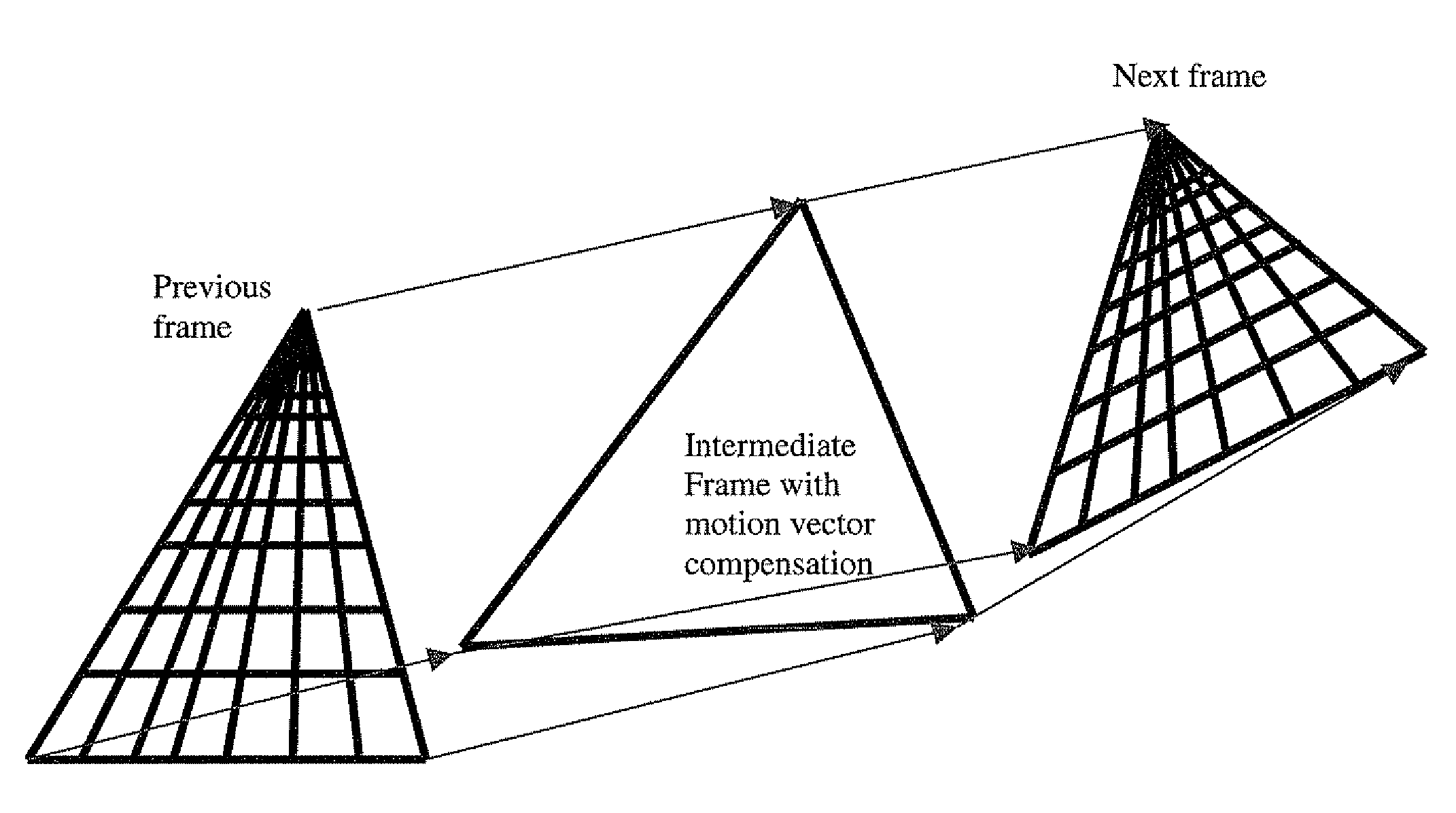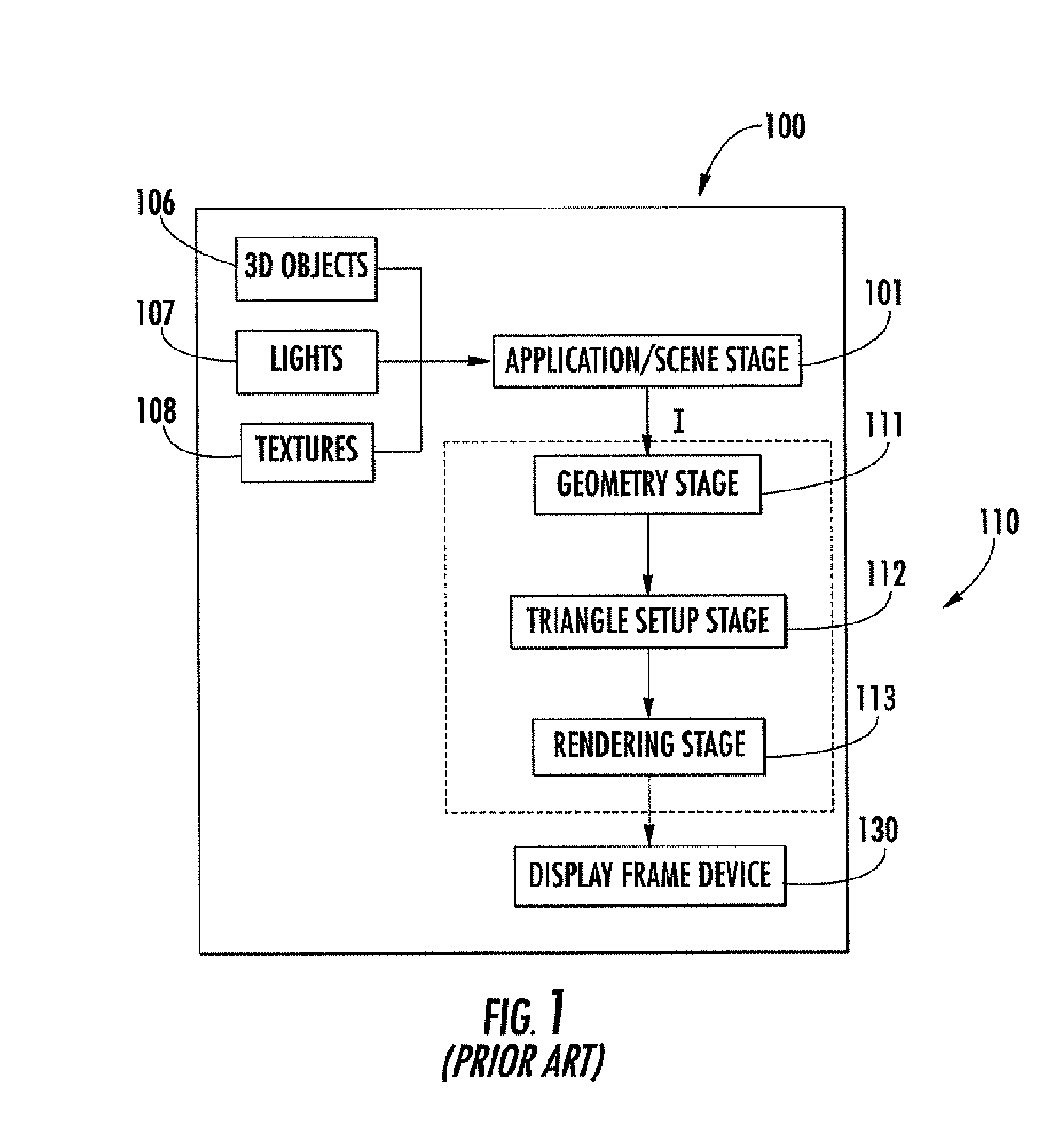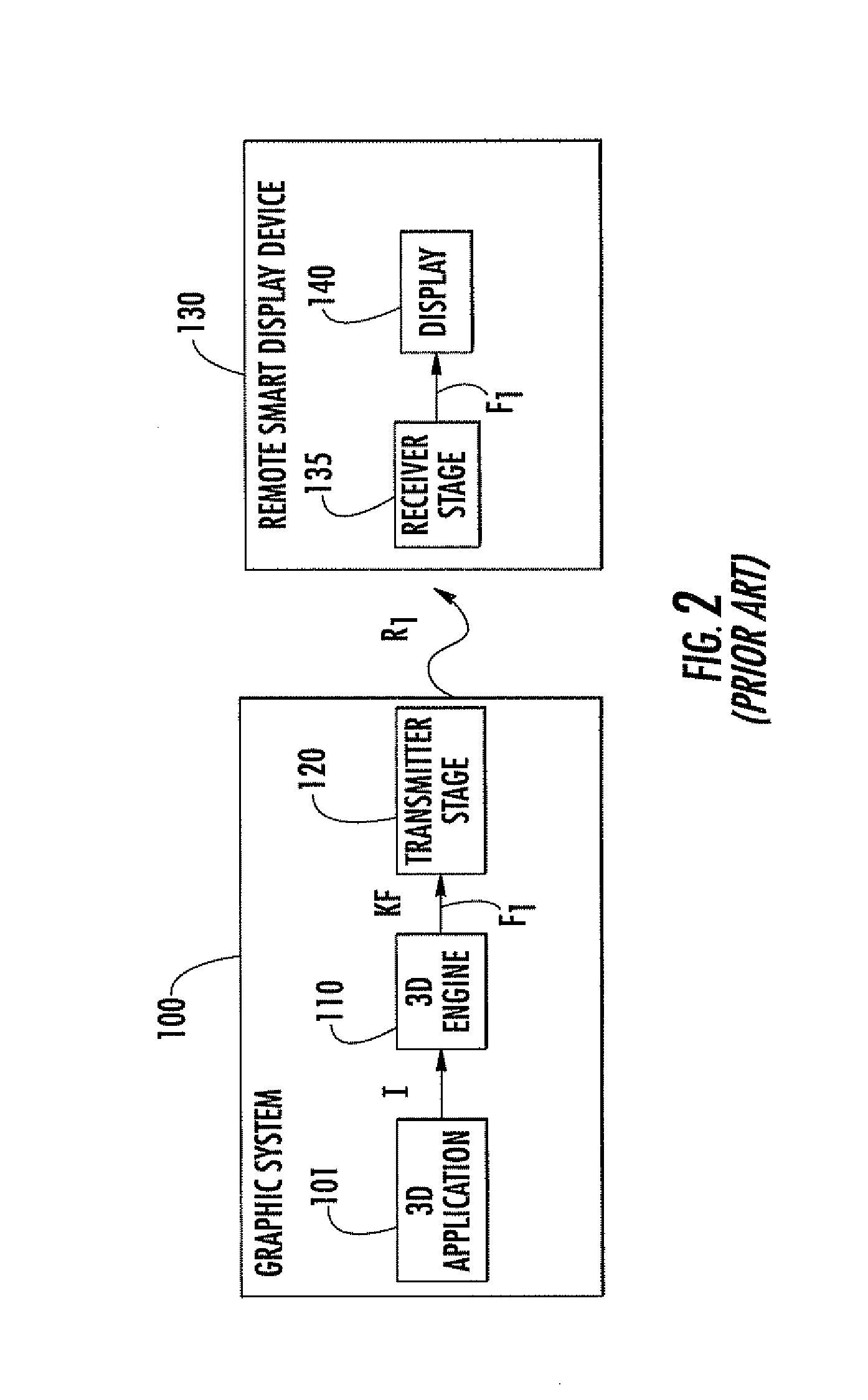Graphic system comprising a pipelined graphic engine, pipelining method and computer program product
graphic engine technology, applied in the field of graphic system comprising a pipelined graphic engine, pipelining method and computer program product, can solve the problems of high computational power, high cost of dedicated graphics, and high complexity of the stages that process and affect pixels (at the end of the pipeline) to achieve the effect of reducing the rate, simplifying the circuit and reducing the cos
- Summary
- Abstract
- Description
- Claims
- Application Information
AI Technical Summary
Benefits of technology
Problems solved by technology
Method used
Image
Examples
Embodiment Construction
[0070] In the arrangement described herein, the workload of a graphic engine is reduced by generating a set of fully rendered frames at a reduced frame rate. The graphic engine further produces additional motion vector information. The motion vector information is extracted from the graphic pipeline at a point where this information is already directly available, without using motion estimators. A complete sequence of frames at a full frame rate is recreated starting from the fully rendered frames at a reduced frame rate. These frames are received, decoded and then used as base information to recreate the interpolated frames for obtaining a full frame rate. Predictions are obtained using the motion vectors that are used to address them. Predictions are subject to temporal averaging to create frames that, grouped to the reduced ones in the display order, compose the full frame set.
[0071]FIG. 3 shows a graphic system 200. A graphic application 201 supplies instructions I to a 3D engi...
PUM
 Login to View More
Login to View More Abstract
Description
Claims
Application Information
 Login to View More
Login to View More - R&D
- Intellectual Property
- Life Sciences
- Materials
- Tech Scout
- Unparalleled Data Quality
- Higher Quality Content
- 60% Fewer Hallucinations
Browse by: Latest US Patents, China's latest patents, Technical Efficacy Thesaurus, Application Domain, Technology Topic, Popular Technical Reports.
© 2025 PatSnap. All rights reserved.Legal|Privacy policy|Modern Slavery Act Transparency Statement|Sitemap|About US| Contact US: help@patsnap.com



